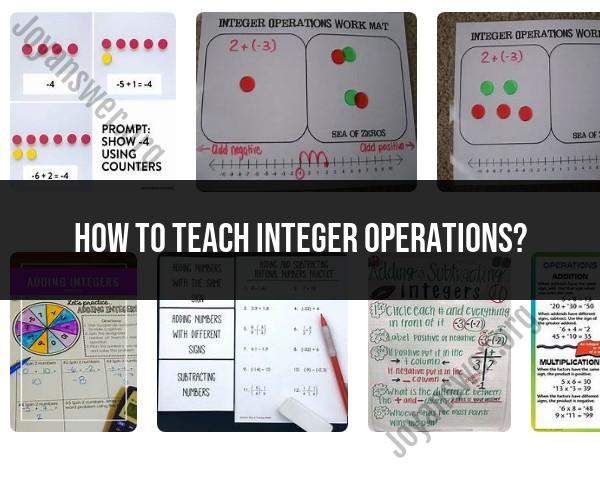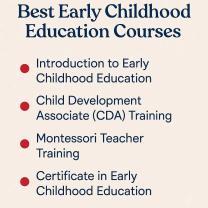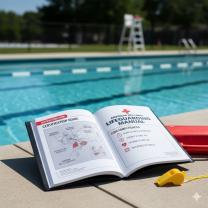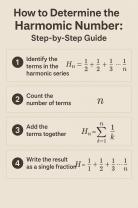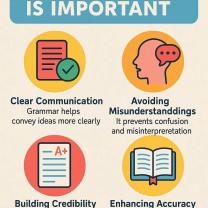How to teach integer operations?
Teaching integer operations, which include addition, subtraction, multiplication, and division of positive and negative integers, can be challenging for many students. Here are some strategies and techniques to help make the learning process more effective and engaging:
Start with Real-Life Examples:Begin by showing students real-life situations where integers are used, such as temperature changes (positive and negative), money transactions, or distances traveled in different directions. This can help students connect the abstract concept of integers to the tangible world.
Use Visual Aids:Visual aids, such as number lines and counters, can help students grasp the concept of adding and subtracting integers. A number line, for example, can represent positive integers to the right and negative integers to the left. Demonstrating movements on the number line can help students understand how adding and subtracting integers work.
Introduce the Rules:Teach the basic rules for integer operations, such as the rules for adding and subtracting integers with the same or different signs. These rules are essential for understanding how operations with integers work.
Practice with Concrete Examples:Provide plenty of concrete examples for students to work through. Start with simple problems and gradually increase the complexity. Use scenarios like owing money or gaining money to demonstrate negative and positive integers in action.
Use Mnemonics:Mnemonics can help students remember the rules. For example, "Same Sign, Add and Keep" for adding integers with the same sign, and "Different Sign, Subtract" for adding integers with different signs.
Interactive Activities:Engage students in interactive activities or games that involve integer operations. Activities like "Integer War" or digital games can make learning more fun and memorable.
Provide Multiple Representations:Show different ways to represent integer operations. For example, demonstrate problems with number lines, algebraic expressions, and word problems. This helps students understand that the concept of integers can be approached from various angles.
Peer Teaching and Collaboration:Encourage students to work together, explain their thought processes to peers, and solve problems collaboratively. Peer teaching can reinforce understanding and build confidence.
Scaffold Learning:Start with simple problems and gradually move to more complex ones. Provide step-by-step guidance, especially for students who may struggle with the concept.
Use Technology:Incorporate interactive online tools and apps that can simulate integer operations. These can make learning more engaging and provide immediate feedback.
Assessment and Feedback:Regularly assess students' understanding with quizzes, homework, and tests. Provide constructive feedback to help them improve.
Relate to Prior Knowledge:Link the concept of integer operations to what students already know about whole numbers. Reinforce the idea that integers are an extension of whole numbers.
Review and Reinforcement:Regularly review previously learned concepts and incorporate integer operations into ongoing math lessons to ensure retention.
Celebrate Success:Recognize and celebrate students' achievements and progress in learning integer operations. Positive reinforcement can boost confidence and motivation.
Remember that teaching integer operations may require different approaches for different students, as not everyone learns at the same pace. Be patient, use a variety of teaching methods, and provide individualized support as needed to help each student master this essential math skill.
Effective strategies for teaching integer operations to students:
- Start with a strong foundation in number sense. Students should have a good understanding of positive and negative numbers, as well as the order of operations, before moving on to integer operations.
- Use concrete representations and visual aids. Hands-on activities and visual aids can help students to visualize and understand abstract concepts like integer operations. For example, students can use counters, number lines, or other manipulatives to represent integers and model addition, subtraction, multiplication, and division.
- Make connections to real-world problems. Real-world examples can help students to see the relevance of integer operations and make them more meaningful. For example, students can solve problems involving money, temperature, or elevation.
- Provide opportunities for practice and feedback. Students need plenty of practice to master integer operations. Practice problems should be varied and challenging, and students should receive immediate feedback so that they can learn from their mistakes.
Incorporating hands-on activities and visual aids in integer instruction:
Here are some ideas for hands-on activities and visual aids that can be used to teach integer operations:
- Number lines: Number lines can be used to model addition, subtraction, multiplication, and division of integers. For example, to add two integers, students can start at the first number and move to the right or left the number of spaces indicated by the second number.
- Counters: Counters can be used to represent integers and model integer operations. For example, to subtract two integers, students can start with a certain number of counters and then remove the number of counters indicated by the second number.
- Integer chips: Integer chips are a special type of manipulative that can be used to represent integers and model integer operations. Integer chips come in different colors, with each color representing a different value. For example, positive integers may be represented by red chips, and negative integers may be represented by blue chips.
- Real-world examples: Real-world examples can be used to make integer operations more meaningful and relatable for students. For example, students can solve problems involving money, temperature, or elevation.
Differentiated instruction and tailored approaches for teaching integer concepts:
Here are some tips for differentiated instruction and tailored approaches for teaching integer concepts:
- Provide multiple representations of concepts. Some students learn best visually, while others learn best auditorily or kinesthetically. By providing multiple representations of concepts, you can reach all types of learners.
- Use scaffolding and gradual release of responsibility. Scaffolding involves providing students with the support they need to be successful, and then gradually removing that support as they become more proficient. For example, you could start by providing students with a step-by-step solution to a problem, and then gradually have them work towards solving similar problems independently.
- Offer a variety of learning activities. Some students learn best by listening to lectures, while others prefer to learn by doing activities or working on projects. Offer a variety of learning activities so that students can learn in the way that works best for them.
The role of problem-solving and critical thinking in mastering integer operations:
Problem-solving and critical thinking are essential skills for students to master. When students are solving problems, they are required to apply their knowledge of integer operations in real-world situations. This helps them to develop a deeper understanding of these concepts.
Here are some tips for incorporating problem-solving and critical thinking into integer instruction:
- Use open-ended problems. Open-ended problems require students to think critically and come up with their own solutions.
- Encourage students to explain their reasoning. When students explain their reasoning, it helps them to clarify their own thinking and identify any areas where they may need additional support.
- Provide opportunities for students to work collaboratively. Collaborative problem-solving can help students to learn from each other and develop different perspectives.
Resources and tools for educators to support integer operations teaching:
Here are some resources and tools that educators can use to support integer operations teaching:
- Online resources: There are many online resources available that offer lesson plans, activities, and other resources for teaching integer operations. Some popular online resources include Khan Academy, Math Playground, and NRICH.
- Teacher guides and textbooks: There are many teacher guides and textbooks available that provide comprehensive coverage of integer operations. These resources can provide educators with a variety of lesson ideas and activities.
- Manipulatives: Manipulatives such as number lines, counters, and integer chips can be helpful for teaching integer operations. There are many different types of manipulatives available, so educators can choose the ones that work best for their students.
